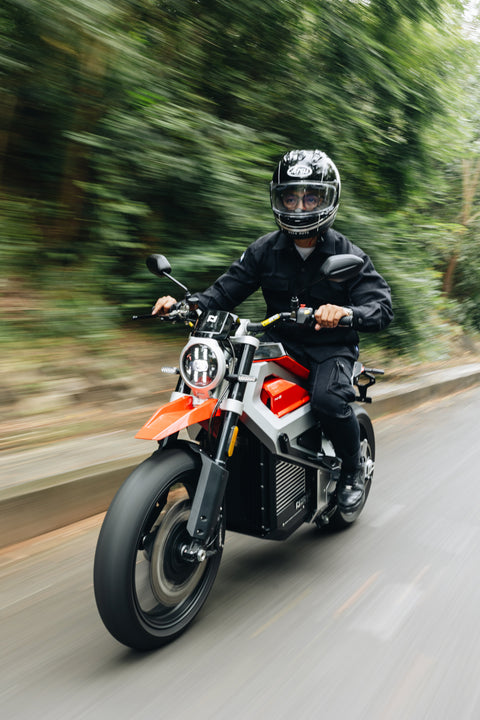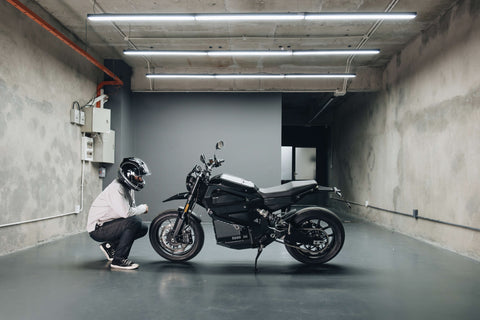Have you noticed how electric scooters are becoming more common these days?
Well, it’s not just your imagination. Electric two-wheelers — or E2Ws — are gaining real traction, and not just in Vietnam, but across Southeast Asia and the world. Let’s take a closer look with NUEN MOTO at what’s been unfolding in the first half of 2025, especially in ways that directly impact everyday consumers like you and me.

A Market Gaining Momentum
In the first six months of 2025, sales of electric scooters in Vietnam rose by an estimated 18–20% compared to the same period in 2024, according to data from VAMA and several domestic EV brands.
A NielsenIQ Vietnam report showed that 65% of urban consumers aged 25–40 are “seriously considering” switching to electric within the next 1–2 years.
And according to a Q2/2025 study by Decision Lab, Vietnamese consumers now value three main things when shopping for electric scooters:
-
Low operating cost
-
Sleek, modern design
-
Environmental friendliness
This shift in mindset marks a new chapter. In 2025, people no longer just want a vehicle — they want a lifestyle product that reflects who they are, fits how they live, and integrates with their tech-driven routines.

Government Push & Infrastructure Challenges
-
Vietnam’s government has rolled out its 2024–2026 “electrification roadmap,” prioritizing the transition of commercial fleets — like delivery services, ride-hailing, and public service vehicles — while investing in urban battery swap and charging station ecosystems.
Major cities like Ho Chi Minh City, Hanoi, and Da Nang are piloting battery swap stations and offering EV registration incentives.
However, infrastructure remains a key hurdle. Dedicated E2W charging points are still mostly concentrated in downtown areas, with a density far below 1 station per 5 km² (data compiled from EVN and local authorities).
There’s also pressure on EV brands — especially startups — to quickly crack the code on after-sales service, maintenance, and customer support to stay competitive in this rapidly heating market.

🌏 Southeast Asia: Full Throttle Into the Future

Vietnam isn’t alone. Across Southeast Asia, a young population, fast urbanization, and sky-high demand for mobility are creating the perfect storm for electric scooters to take over.
Governments are fueling the shift with tax cuts, purchase subsidies, and major public investment — turning the region into a hotspot for EV makers. Here’s how it’s shaping up in key countries:
🇹🇭 Thailand
-
Launched the EV 3.5 program, supporting both buyers and manufacturers (source: Thailand Board of Investment – BOI)
-
Set a bold target: 1 million EVs by 2029, with a large share coming from two-wheelers
-
Hosted Future Mobility Asia 2025 — one of the region’s largest showcases for E2W innovation, held in Bangkok
🇮🇩 Indonesia
-
Offers subsidies of 7 million rupiah (~10 million VND) per eligible electric scooter buyer (source: Ministry of Industry)
-
Saw 30% growth in E2W sales in H1 2025 compared to last year (PERIKLINDO)
-
Gojek and Grab are rapidly switching to electric fleets, sparking a massive shift in delivery and ride-hailing services
🇵🇭 🇲🇾 Philippines & Malaysia
-
Still in early stages, but domestic firms are investing in charging infrastructure
-
Strategic partnerships with Taiwanese battery giants like Gogoro are beginning to take shape (Nikkei Asia, March 2025)
🌍 Globally: EVs Are Becoming the New Normal
From China to India, Europe to the US, electric two-wheelers are moving from trend to inevitable reality — especially for last-mile commuting, daily errands, and delivery services.
While Southeast Asia is catching fire, other global markets are exporting not just EV products, but also the business models and tech ecosystems to support them.

🇨🇳 China
-
Still the global EV king, making up 70% of global E2W output, producing over 40 million units per year(CAAM)
-
Exported 22% more E2Ws in H1 2025 compared to H1 2024 — mostly to Southeast Asia, Africa, and South America
-
Major cities like Shanghai and Shenzhen are now nearly fully electric in two-wheeler usage
-
Leading the trend of fast battery swapping and integrated app–battery–station ecosystems — showing what it takes to make E2Ws truly smart devices, not just machines
🇮🇳 India
-
The 2nd fastest-growing E2W market in the world
-
Sold over 1.3 million electric scooters in 2024, up nearly 30% from 2023 (SIAM)
-
Despite a cutback in government subsidies (FAME-II), the market still grew 12–15% in Q1–Q2 of 2025, thanks to cheaper models and growing consumer familiarity
-
Trends: affordable bikes, removable batteries, home-charging convenience — ideal for short, frequent urban commutes

🇪🇺 🇺🇸 Europe & the US
-
In countries like Italy, France, Germany, and Spain, E2Ws are becoming a sustainable lifestyle symbol — clean, compact, and stylish
-
Steady growth at 8–10% annually, with rising quality and design standards
-
Many cities are now banning gasoline-powered scooters from central zones
-
Popular trends: compact builds, strong batteries, app integration, and lifestyle positioning
Global Snapshot
The global E2W market was valued at around $58 billion USD in 2024, and if the current pace continues, it’s projected to hit $80–85 billion USD by the end of 2025 (BloombergNEF, EV Volumes).
Top growth markets in H1 2025: India, Indonesia, Brazil, and urbanizing African countries like Kenya and Nigeria.
IN SUMMARY
If we had to sum up the global EV scene in the first half of 2025 in one line, it would be:
Electric vehicles are rising everywhere — just at different speeds, and for different reasons.
In countries like the US or parts of Europe, where cars dominate and motorcycles are more of a lifestyle choice, E2Ws are being embraced for their urban convenience, quiet ride, and eco-conscious appeal. Growth might be modest, but it’s steady — and across the broader EV spectrum (especially electric cars), momentum is booming. So while E2W market share may look smaller, EV adoption overall is surging.
But in countries like Vietnam, Indonesia, and India — where motorcycles are the lifeblood of daily life — the shift to electric is happening at blinding speed. In these places, going electric isn’t about “trying something trendy” — it’s a practical decision: save fuel, reduce maintenance, and access affordable options.
Once the public realizes that electric scooters aren’t experimental — but rather, reliable workhorses — adoption rates accelerate faster than most experts expected.
So the real question now isn’t “Should we go electric?”
It’s:
“How fast is this happening — and where will Vietnam land in this global journey toward electrification?”




